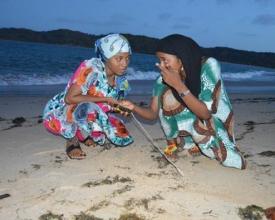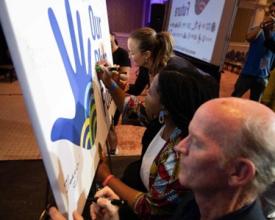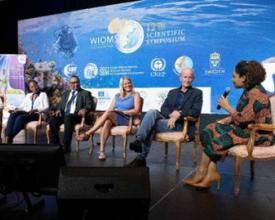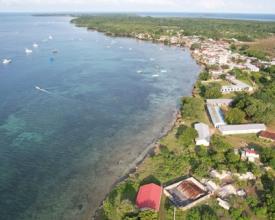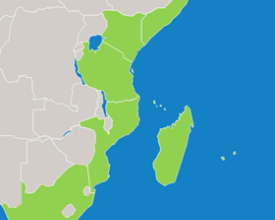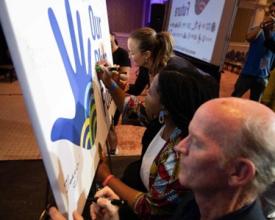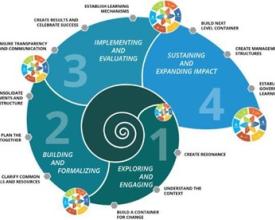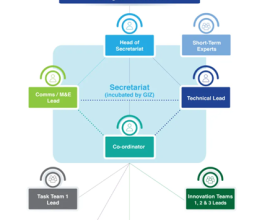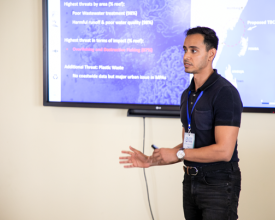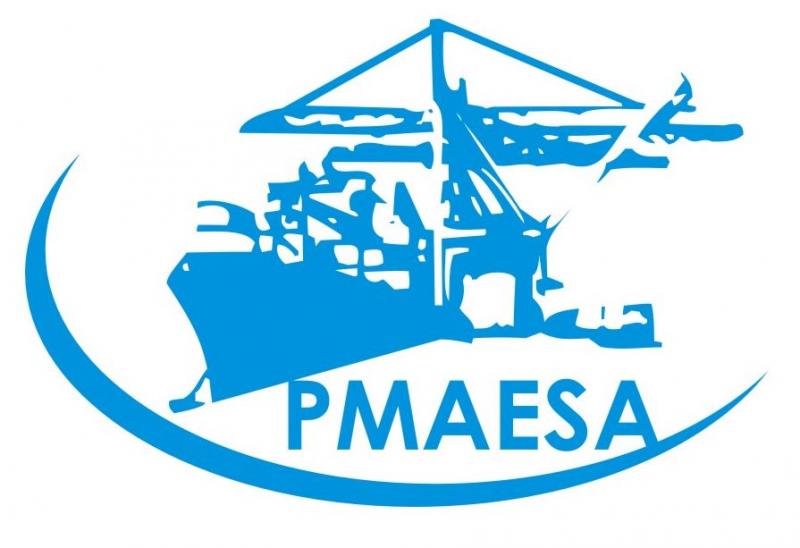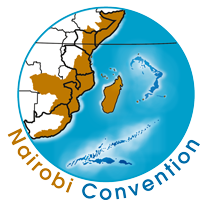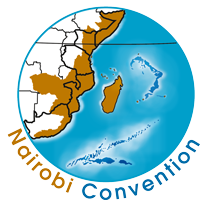
Our Blue Future – A Multi-stakeholder Initiative for Inclusive Sustainable Blue Economy (ISBE) in the Western Indian Ocean
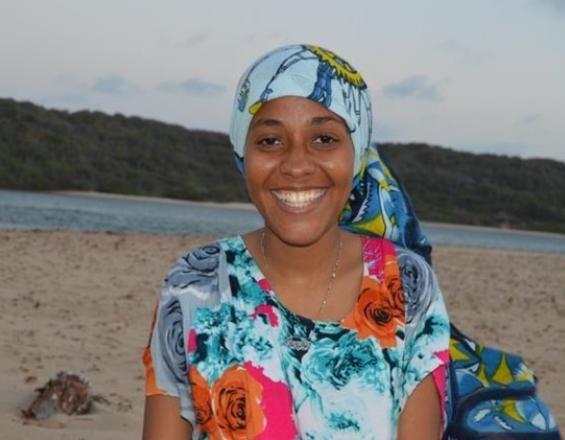
Healthy marine and coastal ecosystems are essential for food security, livelihoods, and wealth for the 60 million people living along the Western Indian Ocean (WIO). However, unsustainable use of marine and coastal resources puts ecosystems and economic development at risk.
Our Blue Future (OBF), a multi-stakeholder initiative for advancing inclusive sustainable blue economy (ISBE) in the region, is working with its currently 24 partners across the region and sectors to catalyze innovation and achieve long-term environmental and socio-economic impact.
An ISBE is defined as one in which countries and people can derive a source of value and wealth from diverse, productive, and resilient ecosystems while simultaneously protecting, maintaining, and restoring them to provide social and economic benefits.
OBF is becoming an inclusive, well-resourced, highly effective public–private–civil society transformation network that helps empower communities, governments, and businesses to foster an ISBE.
Context
Challenges addressed
- Environmental: marine pollution, climate change, erosion, deforestation, habitat destruction, coral bleaching
- Community: food insecurity, limited livelihoods, health services, access to education, safety
- Government: lack of stakeholder dialogue platforms to incentivize an ISBE
- Ocean governance: inadequately defined roles and responsibilities, lack of capacity for regulation, insufficient engagement and empowerment of communities and private sector
- Businesses: lack of social, investor, and regulatory pressure and accountability; understanding and appreciation of ocean sustainability; available good practice and evidence; entry points for dialogue and action; technical and financial support for changing practices or entering partnerships
-
Growing interest in investment flows toward coastal areas, limited understanding of how investments will either support or undermine coastal ecosystems, national priorities, and political priorities
Location
Process
Summary of the process
The WIO faces threats to its fragile coastal and marine ecosystems that require collective efforts and innovative solutions. The regional multi-stakeholder initiative Our Blue Future (OBF) was co-created in response to the 10th Nairobi Convention Conference of parties’ decision.
OBF has been developing in a highly participatory manner, following the Collective Leadership Institute’s Dialogic Change Model and its four phases.
One of OBF's priority areas is to increase the engagement of civil society and the private sector in regional ocean governance. The private sector has a crucial role to play in ocean stewardship. By engaging in ocean stewardship, the private sector is presented with opportunities to tap into growing markets for sustainable ocean products and services as well as build relationships with other key stakeholders.
Our Blue Future is also focused on activating a transformation network of partner-led, local partnerships for an inclusive sustainable blue economy, including increased levels of cooperation between different stakeholder groups. For this reason, moving towards implementation and impact on the ground is essential.
Building Blocks
Political will and a mandate for developing a multi-stakeholder initiative to strengthen Inclusive Sustainable Blue Economy in the WIO region
The Western Indian Ocean (WIO) region is recognized globally as a biodiversity hotspot with high ecological and socio-economic value. However, with increased global demand for natural resources, pollution, climate change, and a diversity of unsustainable economic activities, the region’s fragile coastal and marine ecosystems are under threat. In response to this, efforts and innovative solutions are urgently required as a business-as-usual scenario will likely result in the depletion of coastal and marine resources and associated socio-economic benefits. Starting in 2020, to bolster collective leadership between state, private sector, and civil society actors, GIZ’s Western Indian Ocean Governance Initiative (WIOGI) and partners supported discussions to develop a regional multi-stakeholder initiative for an Inclusive Sustainable Blue Economy in the Western Indian Ocean region. This proposal was presented and endorsed during the tenth Nairobi Convention Conference of Parties (Decision CP.10/12) in November 2021.
Enabling factors
- Having an official mandate is an essential success factor for such a participatory, multi-stakeholder, and multi-sectoral process. It helps create ownership for the process and continuous collaboration within the Our Blue Future alliance.
Lesson learned
-
It is important to have a clear role for governments in a multi-stakeholder initiative. Without an appropriate role for government actors, their willingness to join the initiative becomes challenging.
-
Multi-stakeholder and collective leadership approaches are essential to engaging in high-quality dialogue among key actors, an essential basis for forming action-oriented partnerships across the region.
Multi-stakeholder approach
Partners of Our Blue Future (OBF) model a culture of dialogue and collaboration, and work together as peers through a multi-stakeholder approach - a structured, transparent, and participatory collaboration between two or more stakeholder groups working towards a common goal. It offers an opportunity to generate innovative, appropriate, locally owned, and ultimately sustainable solutions, supporting transformative change.
The multi-stakeholder approach is reflected in OBF’s set-up:
- The Preliminary Steering Team co-designs the strategy, steers the alliance, monitors implementation, and evaluates impact
- Multi-stakeholder Task Teams support the development of governance, stakeholder engagement, and communication strategies
- a Secretariat ensures smooth operation and coordination
- Innovation Teams tackle critical, sector-specific challenges through concrete actions and projects
- a Transformation Network includes multi-stakeholder partnerships across the WIO region.
The Collective Leadership Institute (CLI) plays a key role in supporting OBF’s multi-stakeholder approach and strengthening the capacities of its members. It contributes expertise in bringing leadership concepts to enliven the alliance by encouraging a high-quality, inclusive, and action-oriented stakeholder engagement and dialogue process within OBF.
Enabling factors
-
Partners are willing to collaborate on eye level as peers. Each partner contributes different resources and complementary competencies to maximize value and impact toward OBF’s shared vision for the WIO region.
-
Partners engaged in a very participatory and co-creative process to develop OBF’s Transformation Network Blueprint and to prioritize actions related to its objectives; ownership is high and momentum growing for further implementation.
Lesson learned
-
Bringing together partners with different approaches, cultures, values, and interests in an equitable manner that delivers value for all requires collaboration capacity, intention, and sustained effort. Given the wide array of stakeholders, co-developing a shared vision is important to create a sense of ownership and inspiration. It also ensures full participation rights for all key stakeholder groups.
-
Establishing a mechanism to measure impact and results is necessary, alongside measuring the vitality of the OBF collaboration ecosystem to ensure that all partners continue to share a common understanding of the initiative’s relative strengths and areas for development to inform planning.
Resources
Involving the private sector
The private sector has a profound role to play in catalyzing and accelerating the transition to an inclusive sustainable blue economy (ISBE). There has, however, been minimal private sector engagement in ISBE matters. Our Blue Future has developed a private sector engagement strategy, which focuses on effective ways to engage the private sector and the benefits they can gain.
The private sector is driven by opportunities, value creation, financial risk, operational risks, and regulatory risks. Our Blue Future offers the private sector opportunities through Innovation Teams to mobilize resources, a showcase platform, a collective voice for advocacy, an innovation testing ground, matchmaking with other partners, a sense of community, and the chance to build a legacy.
Enabling factors
- Having a clear framework, structures, and forms developed on how to engage the private sector is essential to ensure all partners have equal participation rights.
Lesson learned
-
Honest dialogue and building a common understanding between partners help foster collaboration and alignment of goals to avoid the notion that private sector partners have more influence over decisions within the multi-stakeholder initiative.
-
Building interest and partnerships by highlighting the benefits of collaboration beyond economic benefits is essential.
-
Defining roles and responsibilities of private sector partners helps establish clarity and ensures that each partner contributes their unique expertise and resources to the collaboration.
-
Pre-screening potential partners to ensure productive partnerships, which involves assessing their capabilities, values, and alignment with the objectives of the initiative.
-
Clustering private sector partners into different sectors based on their interests has been useful, such as through OBF’s Innovation Teams. This clustering approach enables focused collaboration within specific industries or areas, fostering synergies and maximizing impact.
Moving towards implementation and impact on the ground
Our Blue Future (OBF) developed a three-year strategy (2023-2025), which will be implemented through a collaborative OBF system involving government agencies, the private sector, local communities, and development partners. The strategy is to deliver on three strategic pillars:
- Empowering stakeholders
- Improving integrated ocean governance
- Promoting sustainable investment and financial flows in the blue economy sectors.
Thematic action areas were identified as the following: Blue tourism, circular economy, community livelihoods, ports and shipping, blue finance, fisheries, blue technology, and nature-based solutions/grey-green infrastructure.
Concrete activities are being implemented in the pilot country of Mozambique, including work on circular economy and the development of a Club of Friends for Maputo National Park.
Enabling factors
- Establishing strategic partnerships with key institutions which can be used as a model of how private companies and other actors can collaborate to support coastal and marine protected areas in a more systematic and effective manner.
- Designing a structure for collaboration in a participatory manner and then mobilizing more partners of aligned vision to implement together.
Lesson learned
- For long-term results, it is important to forge strategic partnerships that capitalize on private sector interests while supporting sustainable livelihoods and marine and coastal conservation.
Impacts
- Our Blue Future was officially launched in October 2022 at the 12th Western Indian Ocean Marine Science Association (WIOMSA) Symposium as the WIO’s multi-stakeholder initiative to enhance coastal and ocean stewardship and accelerate the transition to an inclusive sustainable blue economy. The initiative continues to grow, currently with 24 partners from across sectors.
- The initiative has managed to develop an evolving Steering Structure, sector-specific Innovation Teams, and a nascent Transformation Network; mechanisms that will help deliver benefits such as:
-
Capacity development including training for an ISBE and multi-stakeholder collaboration approaches, knowledge exchanges, and brokering new partnerships
-
Joint advocacy and awareness raising for policy, business, and societal change
-
Joint project delivery, including identification, incubation, development, and implementation
-
Resource mobilization, channeling expertise and funding opportunities to local integrated ISBE solutions
-
Beneficiaries
-
60 million people of the WIO dependent on its ecosystems for livelihoods and wellbeing
-
Marine and coastal ecosystems, incl. estuaries, seagrass beds, coral reefs, and mangroves
-
Small, medium, and large-scale businesses engaged in an ISBE
Sustainable Development Goals
Story
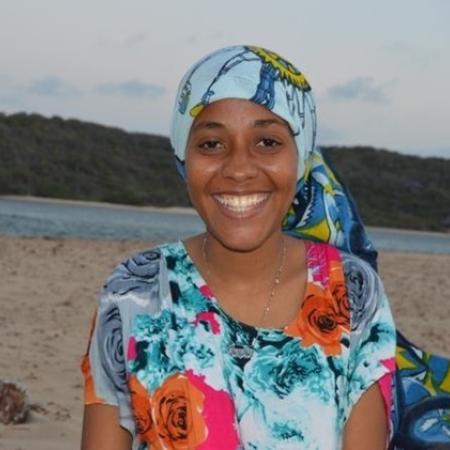
The Western Indian Ocean is home to five sea turtle species: the Green Turtle, Hawksbill, Loggerhead, Leatherback, and Olive Ridley. From hatchling to adult, sea turtles are highly migratory and have high cultural and socio-economic significance. However, sea turtles face many threats. Addressing these threats is difficult, but progress is being made all across the WIO.
“I want the Turtles of my Childhood Back!”
24-year-old Mulhat Mohamed is a teacher by training and a member of the Kiunga Turtle Conservation Group comprised of 20 youths from Kiunga protected area who volunteer with WWF-Kenya. “When I was a young girl, I would come to the beach every evening during the high tides to watch turtles ‘play’ on the waves, then they would crawl to the sandy beach. They are amazing creatures, watching them follow the tide is breathtaking. I can’t explain the feeling, you have to experience it to get what I am saying. Today, the story is different. When I come to the beach I am lucky to spot one, they have been hunted, killed by plastics or trapped by fishing nets. Turtles on the beach have been replaced by trash and plastics. I want my children to experience the feeling I felt, I don’t want my children to only read books about sea turtles. I want the turtles of my childhood to come back. I will do everything possible to make sure they come back. I just want the view of my childhood, that’s all; come every evening and watch the turtles swim on the high tides. That’s why I volunteer my time to help WWF-Kenya patrol Mkokoni Beach and record data using GPS provided to the Kiunga Turtle Conservation Group; we record and report on turtle nests or sightings. The patrols take place during the day and at night because turtles come out to lay eggs at nightfall. I have to do what it takes to ensure their population bounces back. Marine turtles are endangered. I have decided to help them because they are helpless. If the turtles are healthy, the ocean is and so are my people and my community whose economy and livelihoods depend on the ocean.” - Mulhat Mohamed
WWF-Kenya, through funding from WWF-UK, is improving monitoring efforts through the use of GPS issued to turtle conservation groups and other stakeholders as well as training on beach patrols, nest verification and translocation, tagging, and monitoring of sea turtles. Intensive and extensive monitoring of nesting beaches has increased hatchling success rates.


